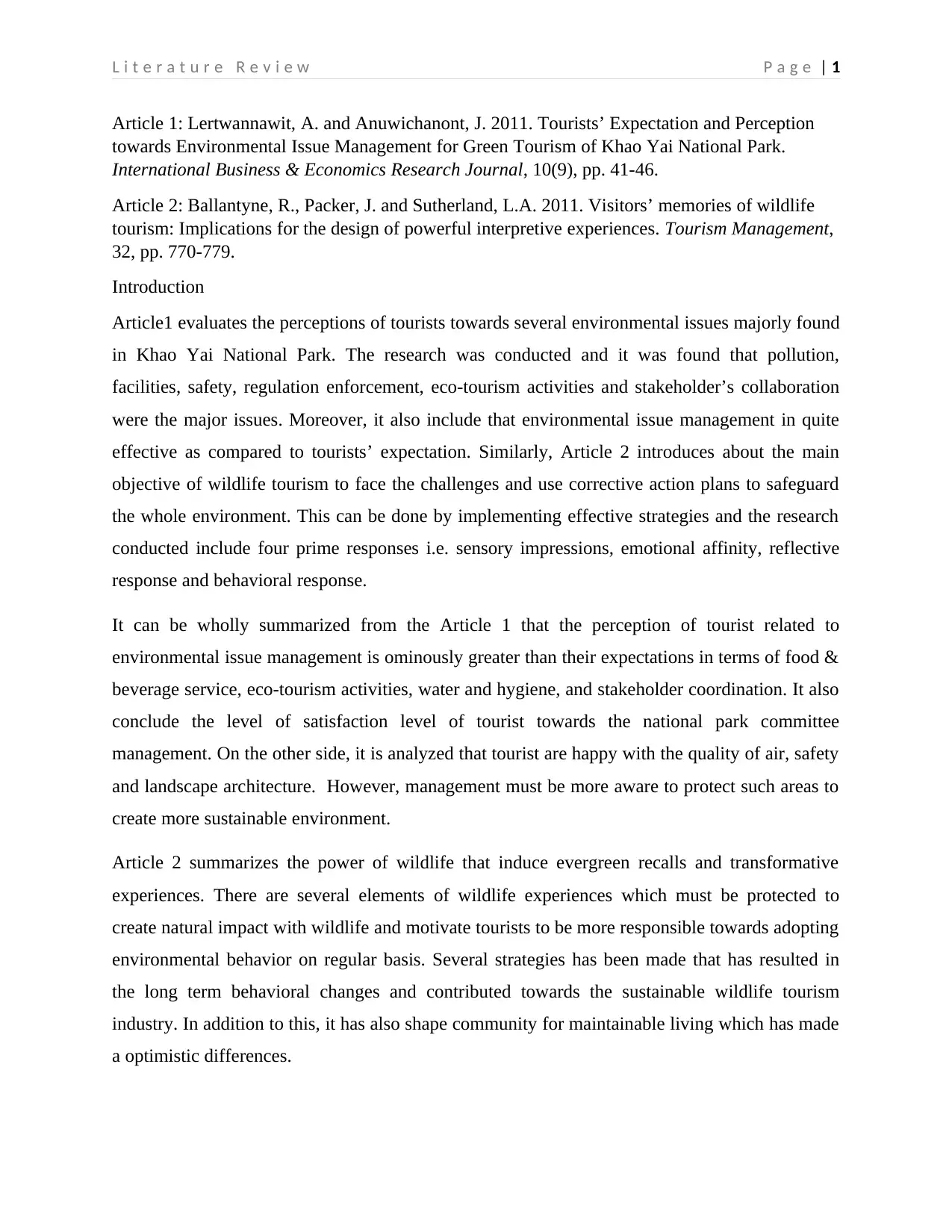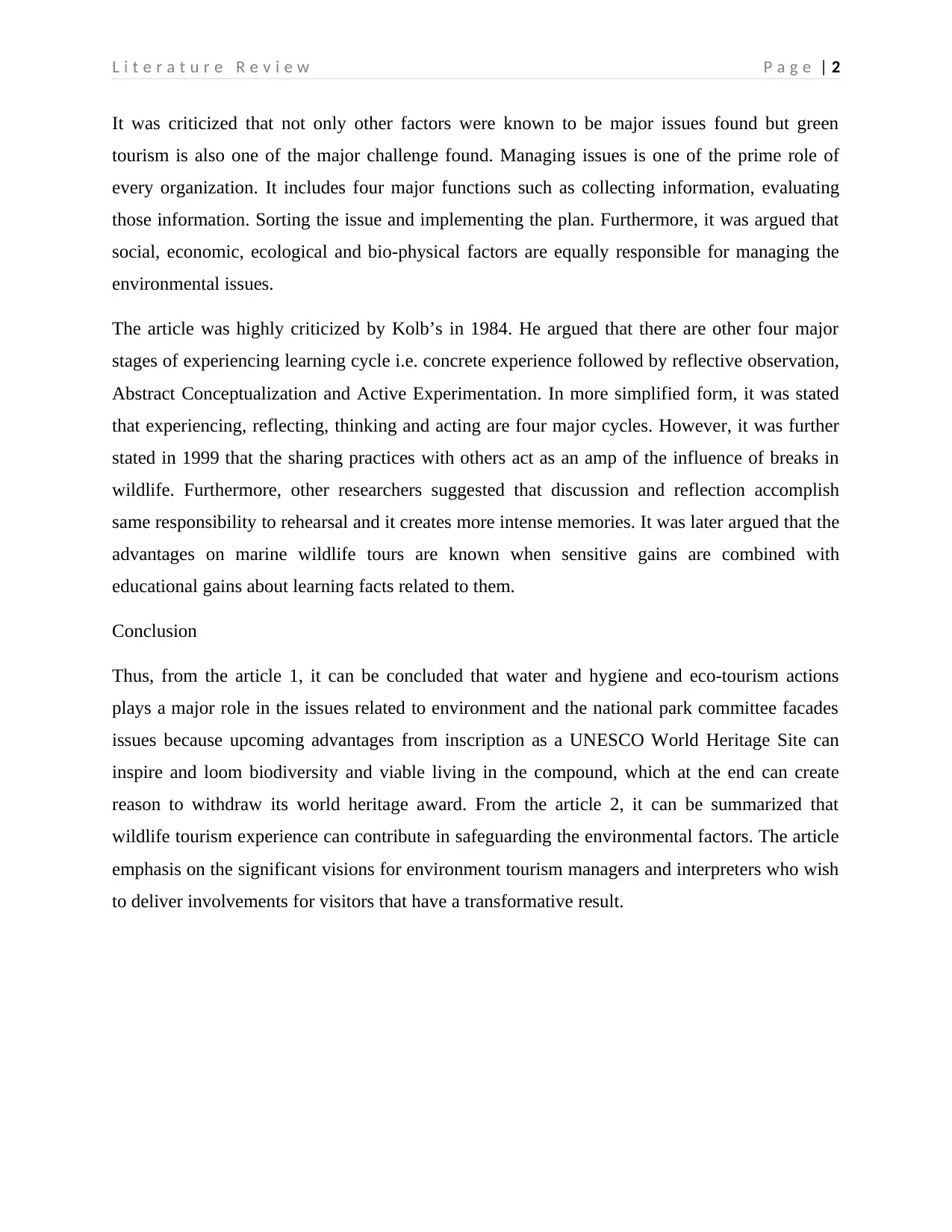Literature Review: Environmental Management in Tourism Context
VerifiedAdded on 2023/06/11
|3
|758
|419
Literature Review
AI Summary
This literature review examines the perceptions of tourists towards environmental issues in Khao Yai National Park and the role of wildlife tourism in environmental conservation. Article 1 evaluates tourist perceptions of pollution, facilities, safety, and eco-tourism activities, finding that tourist perception of environmental management exceeds their expectations. Article 2 explores how wildlife tourism can promote environmental responsibility through sensory impressions, emotional affinity, and reflective and behavioral responses. The review criticizes the limited scope of Article 1, suggesting that social, economic, and ecological factors also play a role. It concludes that addressing water, hygiene, and eco-tourism activities is crucial for sustainable tourism and that wildlife tourism experiences can significantly contribute to environmental protection by fostering long-term behavioral changes.
1 out of 3









![[object Object]](/_next/static/media/star-bottom.7253800d.svg)